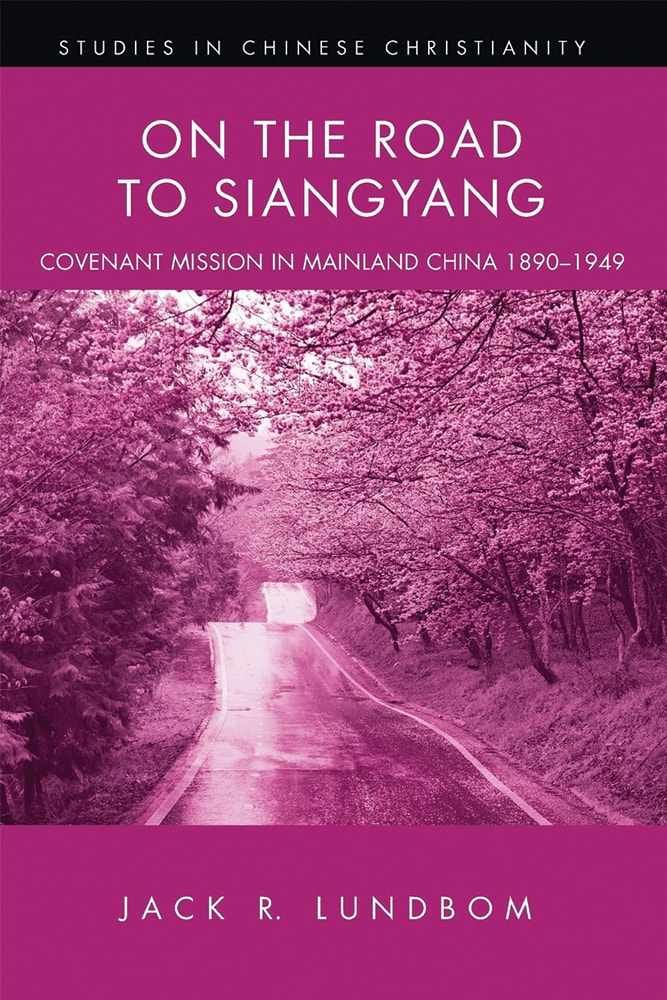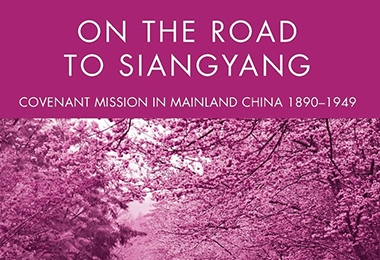[vc_row][vc_column width=”1/2″][vc_column_text] [/vc_column_text][vc_column_text]
[/vc_column_text][vc_column_text]
On the Road to Siangyang
Jack R. Lundbom
Pickwick Publications, 308 pages
[/vc_column_text][/vc_column][vc_column width=”1/2″][/vc_column][/vc_row][vc_row][vc_column][vc_column_text]
Reviewed by Don Dwight | February 13, 2017
[/vc_column_text][/vc_column][/vc_row][vc_row][vc_column][vc_column_text]
Local troublemakers spread rumors that a man—a foreigner—was causing people to become ill. He had come to the community to bring good news. Intending to silence him, the troublemakers picked up stones and started throwing them at the man. Severely injured, he ran for his life, managing to escape only through the timely intervention of two city officials.
You might think this is a story from the book of Acts, but in fact the man in this story is Peter Matson, first Covenant missionary to China. It was 1892, less than two years after Matson had arrived in China. On the Road to Siangyang, by Covenant minister and teacher Jack Lundbom, chronicles the story of Matson and the Covenant mission work in the central China province of Hubei from 1890 to 1949.
Matson spent another forty-seven years in China leading the way for ninety-four Covenant missionaries as they established their first mission stations in Siangyang and Fancheng and then spread out to the surrounding towns and cities.
Lundbom tells their stories in moving detail. Along with Matson, who lost his first wife and two children to disease in China, these missionaries lived and worked through periods of rebellion, revolution, war, bombings, and kidnappings. Several gave their lives. Through hard work, perseverance, and faith in God, these Covenanters and their Chinese co-workers started forty-six mission stations, helped educate more than 2,000 boys and girls, operated a full hospital, and planted churches with about 2,500 adult members all by the year 1925.
These stories are inspiring. Granted, I do have a special interest
in this account because my grand-parents, Albert and Elna Dwight, were Covenant missionaries in China from 1915 to 1949. However, they are also the stories of every church and member of this denomination. It is only with the strong support, encouragement, and prayers of the home churches that missionaries are able to serve. That was true in 1916 and it’s true today.
In 1949 all missionaries had to leave China in front of the advancing Communist rebels. The persecution of the Chinese church had begun and reached its heights during the terrible Cultural Revolution of the 1960s and ’70s. Thousands of Christian pastors were imprisoned and killed, and the church was driven completely underground. Yet those planted seeds, hidden underground, began to sprout in the 1980s, and we have seen an incredible revival of the Christian church.
Lundbom describes his 2008 and 2014 visits to several churches in Hubei Province, which restarted from the remnants of Covenant members from years past. They no longer can call themselves Covenant churches because denominations are not allowed in China, but they are a direct result of the work of early Covenant missionaries. Meanwhile, new churches continue to be started and thousands are coming to Christ weekly all over China. To God be the glory!
[/vc_column_text][/vc_column][/vc_row]














